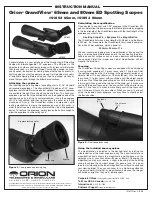
13
Downloading the Photo/Video Files
etc), then click “OK” to transfer copies of the photo files you want.
5. After the photos are transferred to your hard drive, you can disconnect the camera.
Windows 2000 may produce a screen warning that you have disconnected a USB
device without stopping or ejecting the “disk” first (your photo files will not be
harmed). if so, check the box that adds an icon to your system tray or taskbar. then
next time you finish transferring photos, you can click that icon first, and “Stop the
USB Mass Storage Device” before disconnecting the camera. (
On Mac computers,
drag the “disk” that appeared on your desktop when the camera was connected into
your Trash to “eject” it before disconnecting
.)
6. You’re now ready to open the photo files in any photo editing software. Just use
File>Open and go to the folder where you stored the photos earlier. it is also
possible to open and work with your photos directly from the imageView while it
is still connected. if you choose to work this way, from a connected camera, be sure
that you save the photo (when you are done editing) to your hard drive, and not the
camera’s memory or card. if you are new to photo editing on a computer, consult
your software’s Help menu for tips on using its features. Along with adjusting the
brightness, contrast, sharpness and color of your photos, you can resize the photo
to fit the paper if you are printing, or save a smaller, low or medium resolution
version for email or inserting into documents. When you are ready to save your
edited file, you may want to use “Save As” and give it a more descriptive name than
“SUNP___”. Doing this also preserves the original file as a backup to reopen and re-






































